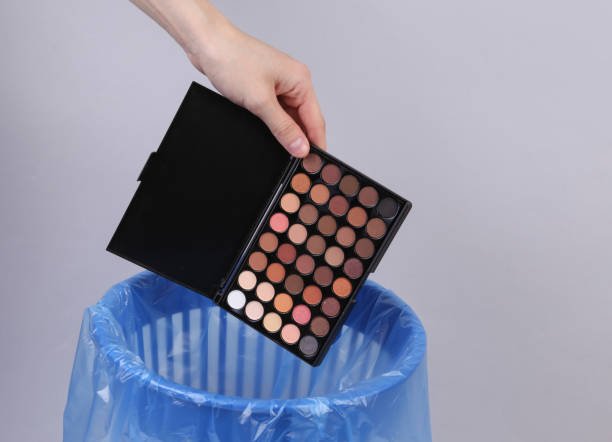Let It Go
When to Toss Out Expired Makeup Products
A Guide for the Ultimate Product Purge
Today's Pro-Tip is dedicated to letting go. No, no, no, not letting go of bad relationships, I'm talking about when to ditch your old and expired makeup products. Let's face it, unless you're mad rich and can replace products without losing sleep, this blog post is for you!
Before I start, I'd like to issue this disclaimer: READING MAY RESULT IN MASSIVE PRODUCT PURGE. I apologize in advance for any inconvenience or emotional pain this may cause and will be offering virtual memorial services for any grieving make up artists and enthusiasts.
With that being said let's get into it! We've all had that checkout experience when you bought a few items at the department store or beauty product supplier only to get hit with the infamous, "That'll bring your total to $246.98" or at least you get the idea.
So its understandable why a lot of consumers want to keep their products until the final drop is used regardless of the purchase date. We invest quite a bit of money into your makeup collections and often have a difficult time parting with expensive products, limited edition items or just your kit faves.
In this post, I'll be discussing with you some general rules of thumb, on when it's best to ditch those products and briefly cover some of the risks of keeping products after expiration. Fair warning this is jammed packed with information!
Signs & Risks
Always be mindful of the changes in your products over time. Often times, your makeup will let you know when its fanito! Keep a look out for any of these 3 key signs your product is going bad; Changes in color, texture or smell. If you notice your silky foundation is starting to thicken, lose its luster, or begins to separate, its a good time to L.I.G. it! Let it go honey! If you notice an odd smell, TOSS IT!
What’s a P.A.O
Another key indicator, is finding the actual"expiration date" or P.A.O (Period After Opening) on the packaging. Sometimes this can be a little difficult to locate, given some brands go for sleek, modern packaging designs that typically remove "unwanted" or "unnecessary" text from the container.
Actually, upon doing some more in depth research, I discovered the FDAC (Food Drug Alcohol and Cosmetics) Act does not specify in their requirements of manufactures to provide expiration dates on their packaging. It more so implied, the FDA considers manufacturers responsible for creating consumer safe products and appropriate labeling is considered a part of safe practices. Not too sure how I feel about that, but if you'd like to read up on it your self I'll drop a link below.
CLICK HERE TO READ MORE INFORMATION REGARDING LABELING REGULATIONS
However, I found that the majority of the brands in my own kit, do in fact use this system. This symbol represents the PAO, the number indicates the duration period of months (M) or years (Y).
The PAO essentially tells you how long a product is considered "good" or safe for use, once the container is opened or the seal is broken. Think of it like a box of cereal, its not necessarily going to grow mold, and seems like it a non-perishable item, however over time those honey combs stop tasting so sweet and can grow stale. If there was any nutritional value, it all can decrease over time. Thus why "all natural" products tend to have a shorter shelf life, but we'll get to that in a minute.
Still not sure if your product is good? Fret not, I also found a helpful site with information on how to contact beauty providers directly. CheckCosmetics.net also offers a really great tool that allows you to plug in the "lot number" or "batch code" found on the packaging to calculate the expiration date. Click here and check it out!
Buzz Feed has a great breakdown on YouTube.
THE NITTY-GRITTY
So now that you know the warning signs, how to find the PAO or expiration date of your products, it's time to tell you the typical shelf life of your everyday makeup products.
Most cosmetic product will expire within 2 years following its first use. Of course there are ways to preserve the full life of the product. For example, keeping the lids, rims, pumps of you products clean, items with lids are always reapplied and sealed tightly to prevent air from entering the packaging. This will prevent unnecessary exposure to bacteria.





